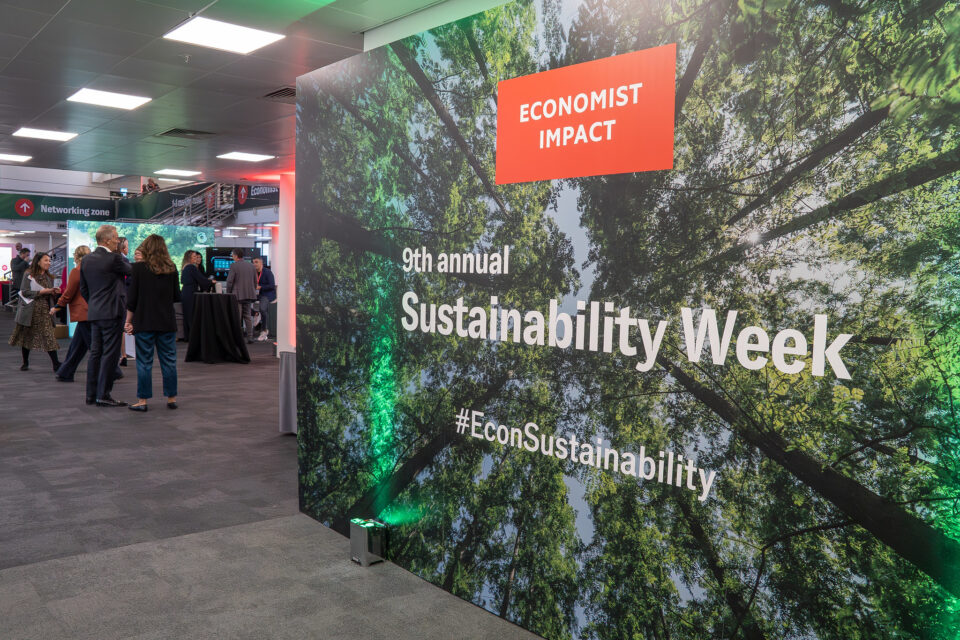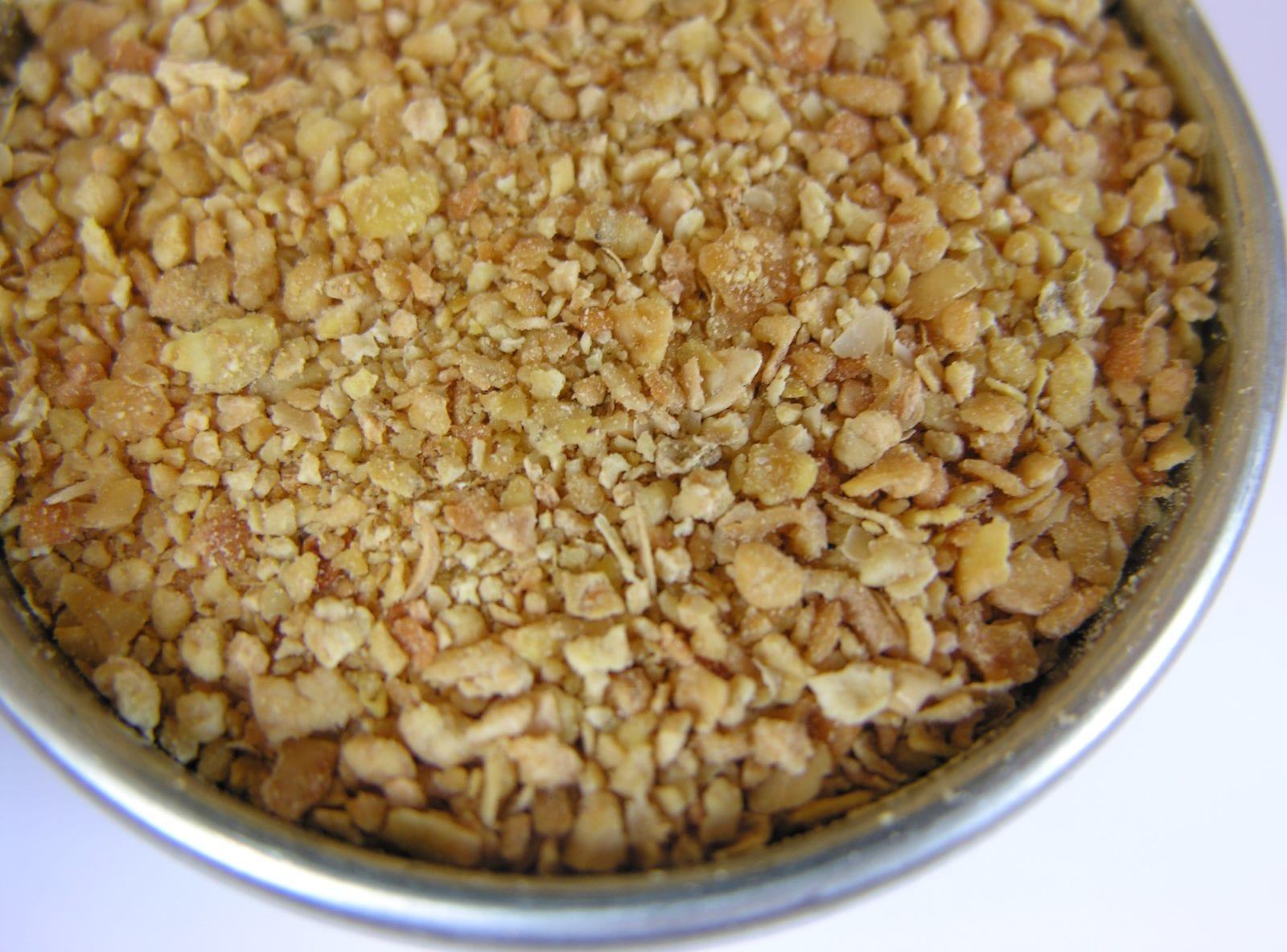
USSEC recently worked to promote U.S. Soy and continue its engagement with Southeastern European customers by organizing the First Southeast European Regional Roundtable Online Conference. This virtual event, which aired from Bucharest, Romania on June 23, was Initiated by the Romanian Feed Manufacturers Association (ANFNC) in partnership with the European Feed Manufacturers Association (FEFAC), Bulgarian Feed Manufacturers Association, the National Greek Inter-Professional Poultry Association (EDOPT), and KRMIVA Conference Croatia. USSEC and FAS worked together to provide presentations focused on the Soy Protein Market Outlook: Main Challenges, Potential Supply Constraints and U.S. Sustainable Soy: Sustainable Soybean Production.

The Southeast European region has several strategic advantages because is bordered by three seas: the Black Sea; the Mediterranean Sea, including the eastern and central Aegean Sea; and the Adriatic Sea. This provides the region with easy access to imported raw materials and feed additives through the commercial seaports. Additionally, all countries who participated in this event are part of the EU, which facilitates trade and exchanges.
The U.S. speakers’ panel was opened by Jonn P. Slette, Agricultural Attaché, U.S. Embassy Warsaw, Poland. Mr. Slette introduced FAS’s role and how the organization links U.S. agriculture to the European feed and livestock industry. Soy customers were encouraged to develop relationships with U.S. soy exporters and invited the end-users for a regional co-operation to address shared challenges of the feed and livestock sectors.

Bill Bayliss, director for the United Soybean Board and the Ohio Soybean Council, shared information with participants about this year’s U.S. soy crop. In his presentation, Mr. Bayliss reconfirmed the commitment of U.S. soy farmers to their international customers and shared that soy business in the U.S. is moving forward despite the ongoing pandemic crisis: still planting, still growing, and still farming.
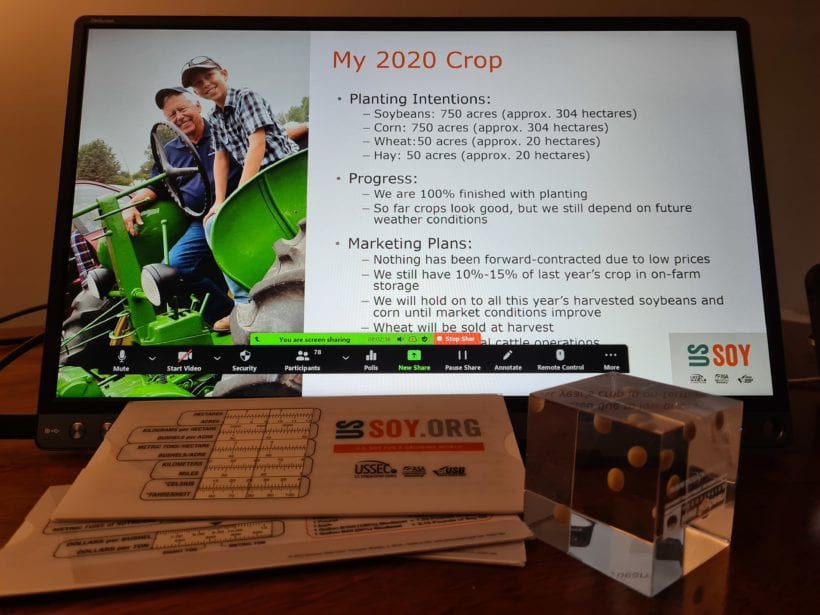
While many unknowns remain surrounding how the global health crisis will shape societal and economic outcomes, the U.S. soy supply system remains resilient, emphasized Ken Eriksen, Senior Vice President, IHS Markit, during his presentation. As global food supply chains are complex, the COVID-19 pandemic has undeniably altered their typical movement. However, the U.S. transportation system has proven to be resilient and has insured the fluidity of the grain and soybean logistics pipeline.
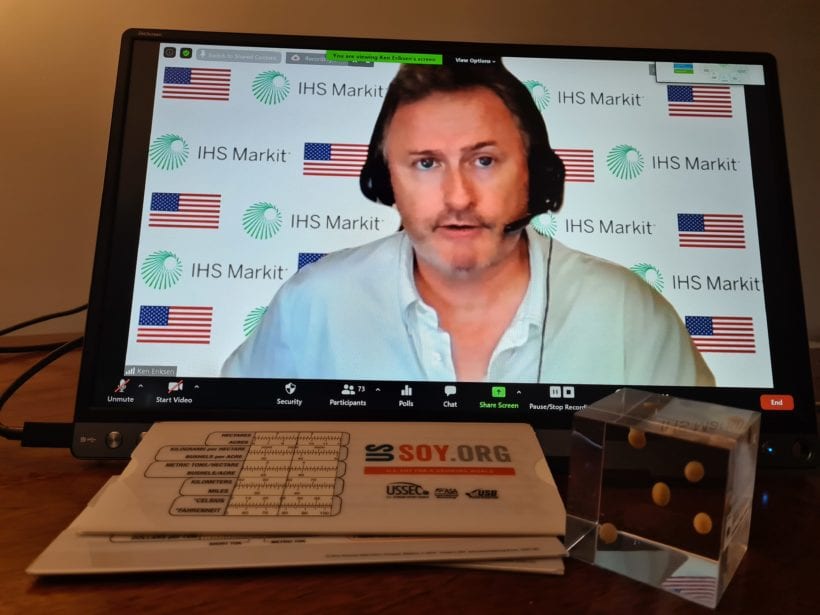
“In the U.S., the soy supply chain relies on farming/production, storage, crushing/processing, and exports,” explained Daniel Secondi, Senior Trader from Perdue Agribusiness. “The COVID-19 pandemic has presented extraordinary challenges at all levels. But, the key players responsible in the U.S. soy industry are responding to make sure supply lines are maintained.”
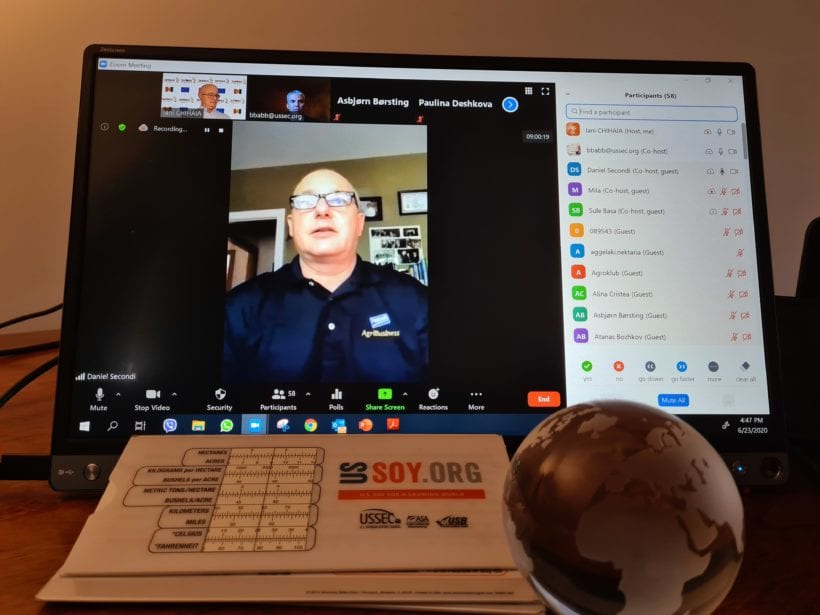
Mr. Secondi reiterated that U.S. Soy is open for business and that the whole industry continues to maintain the export supply chain by adopting new strategies to mitigate the impact of the pandemic.
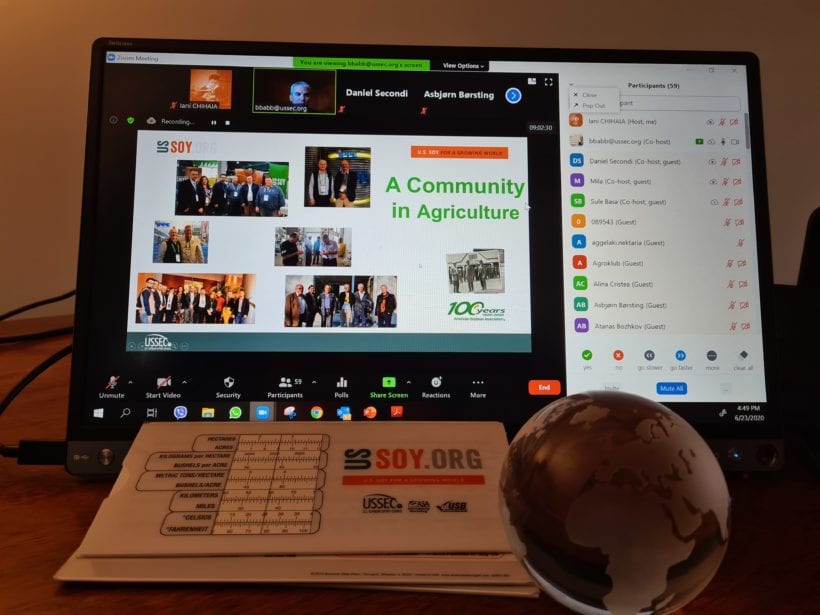
U.S. soybean farmers understand the importance of sustainable farming to protect valuable environmental resources,” concluded Brent Babb, USSEC Regional Director – EU/Middle East North Africa (MENA). “By doing so, they preserve and protect their farming operation for the next generation. Buyers of U.S. Soy and soy products can be assured that more than 500,000 U.S. soybean farmers – the vast majority in America – have followed guidelines for responsible farming. This means they are purchasing a sustainably-grown product.”
The virtual conference participants from Romania, Bulgaria, Greece, Croatia, and Slovenia appreciated the first-hand information received from the U.S. speakers and thanked USSEC for the support and commitment during these difficult times.
